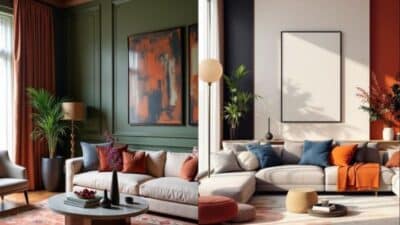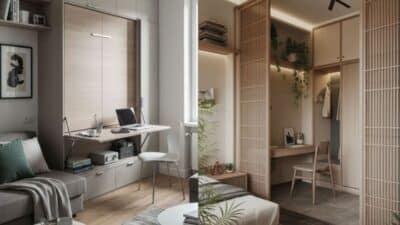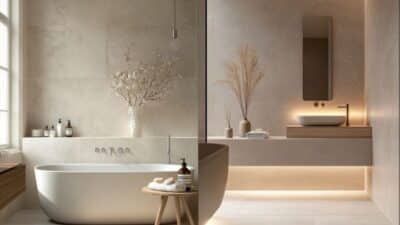Scandinavian design has captivated the interior design world with its timeless appeal and practical approach to creating beautiful living spaces. Emerging in the early 20th century and reaching its golden age between the 1930s and 1970s, this design philosophy emphasizes simplicity, functionality, and a connection to nature that resonates with modern lifestyles. Scandinavian design principles focus on creating serene, uncluttered environments that improve daily life through a harmonious blend of form and function.
The Nordic aesthetic embraces clean lines, neutral color palettes, and natural materials that reflect the region’s landscape and limited daylight hours. You’ll find light woods like pine and birch paired with textural elements such as wool, linen, and leather that add warmth to minimalist interiors. This approach isn’t merely about aesthetics—it’s a holistic philosophy that values sustainability, quality craftsmanship, and accessible design that serves everyday needs.
Key Takeaways
- Scandinavian design combines minimalist aesthetics with functional solutions to create spaces that enhance daily living.
- Natural materials, neutral colors, and thoughtful lighting are essential elements that reflect Nordic connections to nature and compensate for limited daylight.
- Quality craftsmanship, sustainability, and meaningful simplicity form the foundation of authentic Scandinavian interiors.

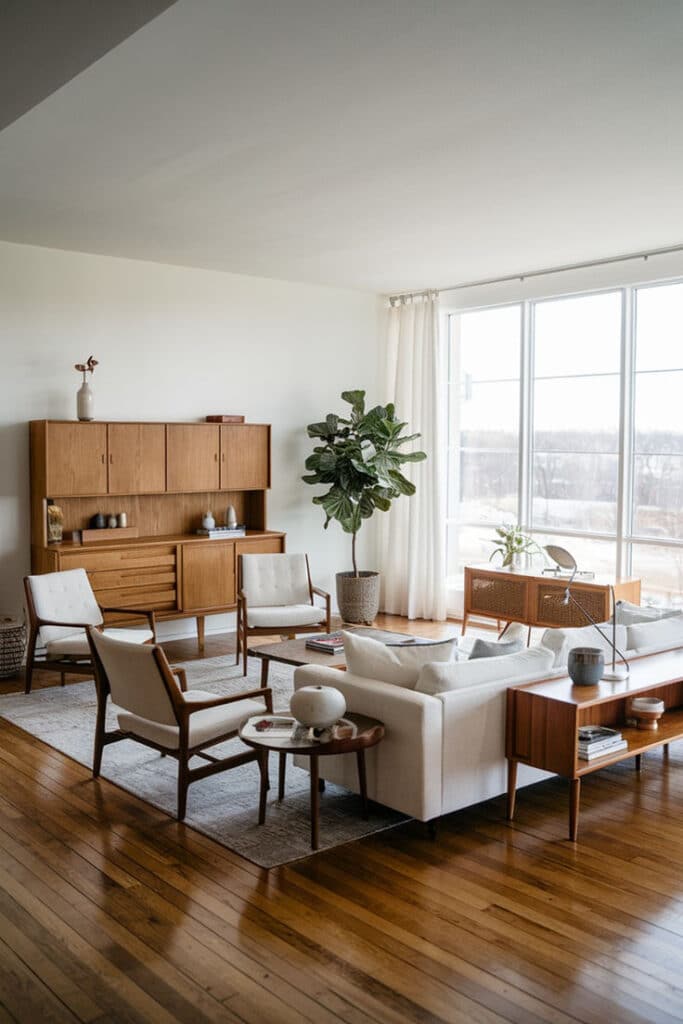
Core Scandinavian Design Principles
Scandinavian design stands out for its commitment to essential principles that have remained consistent for decades. These principles reflect Nordic cultural values and environmental conditions, creating spaces that are both beautiful and practical.
Simplicity and Minimalism
Scandinavian design embraces clean lines, uncluttered spaces, and a “less is more” philosophy. This approach isn’t merely aesthetic—it’s deeply rooted in Nordic practicality and values.
You’ll notice the absence of unnecessary ornamentation in authentic Scandinavian interiors. Every element serves a purpose, contributing to a sense of calm and order.
Color palettes typically feature whites, grays, and neutral tones that maximize light reflection during the long, dark Nordic winters. These neutral backgrounds are often complemented by carefully chosen accent pieces.
The minimalist approach extends to furniture selection, where pieces are thoughtfully chosen for both form and function. You’ll find that Scandinavian spaces breathe, with furniture arrangements that allow for easy movement and create a sense of openness.
Functionality and Practicality
Scandinavian design prioritizes how objects and spaces serve human needs. This functionality-first approach ensures that beauty never comes at the expense of usability.
You’ll find multi-purpose furniture throughout Scandinavian homes—storage ottomans, extendable dining tables, and modular sofas that adapt to changing needs. These pieces reflect a practical mindset and efficient use of space.
Ergonomics plays a crucial role, with furniture designed to support the human body comfortably. This attention to how people actually use objects has made Scandinavian design influential in workplaces globally.
Quality craftsmanship is non-negotiable, with a preference for durable materials that age beautifully. This commitment to longevity reflects both practical considerations and environmental consciousness.
Connection to Nature
Natural elements are fundamental to Scandinavian design, bringing the outdoors inside during harsh Nordic winters. This connection manifests in multiple ways throughout interiors.
You’ll see liberal use of natural materials—particularly wood, which adds warmth and texture. Pine, spruce, ash, and oak appear in flooring, furniture, and architectural elements, often with minimal treatment to showcase their natural beauty.
Large windows maximize natural light, a precious commodity in northern latitudes. Window treatments remain minimal to allow sunlight to penetrate deeply into living spaces.
Houseplants and botanical motifs further strengthen the link to nature, while natural textiles like wool, linen, and cotton add tactile comfort and visual interest. These elements create spaces that feel grounded and authentic rather than sterile or overly designed.

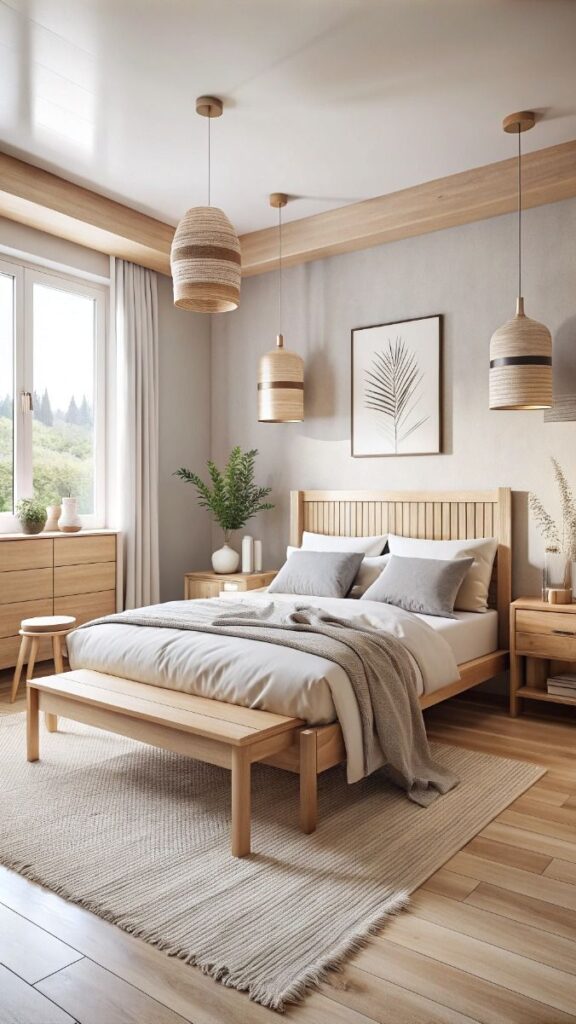
Natural Materials and Color Palettes
Scandinavian design embraces the beauty of natural elements combined with thoughtfully selected color schemes to create serene, harmonious spaces. These fundamental components work together to establish the distinctive aesthetic that has made Nordic interiors so universally appealing.
Use of Wood and Wooden Floors
Wood serves as the cornerstone of Scandinavian interior design, bringing warmth and natural texture to spaces. Light-toned woods like pine, birch, and oak are particularly favored for their ability to brighten rooms while adding organic character.
Wooden floors are almost non-negotiable in authentic Scandinavian interiors. You’ll typically find wide planks in pale finishes that reflect available light and visually expand spaces. These floors are often left uncovered or paired with minimal rugs to showcase their natural beauty.
Wood appears beyond flooring in furniture pieces that highlight clean lines and craftsmanship. Look for items that display visible grain patterns and honest construction techniques. This celebration of wood’s inherent qualities aligns perfectly with the Scandinavian principles of simplicity and functionality.
Linen Curtains and Natural Textiles
Natural textiles play a crucial role in softening the clean lines prevalent in Scandinavian design. Linen curtains are particularly prized for their ability to filter light beautifully while maintaining privacy.
You’ll find these curtains often hang in simple, unlined panels that allow maximum daylight to enter rooms. The slightly irregular texture of linen adds visual interest without overwhelming the space.
Beyond window treatments, incorporate wool, cotton, and sheepskin throughout your home. These materials add tactile comfort and warmth, especially important in the cold Nordic climate. Consider wool throws draped casually over furniture, cotton cushions in subtle patterns, and sheepskin rugs that invite bare feet.
Neutral Color Palette
The signature Scandinavian color palette revolves around light, airy neutrals that maximize brightness in spaces that experience limited natural light during winter months. White serves as the primary foundation, creating a clean canvas that reflects available light.
You’ll want to layer various shades of white with soft grays, gentle beiges, and warm taupes. These subtle variations prevent spaces from feeling sterile or flat. Black accents are strategically used to create contrast and definition within this neutral framework.
While primarily neutral, authentic Scandinavian interiors often incorporate muted pastels inspired by Nordic landscapes. Think pale blues reminiscent of fjords, soft greens echoing forests, and dusty pinks reflecting brief summer sunsets. These colors appear in small doses through textiles, ceramics, and artwork rather than dominating entire spaces.
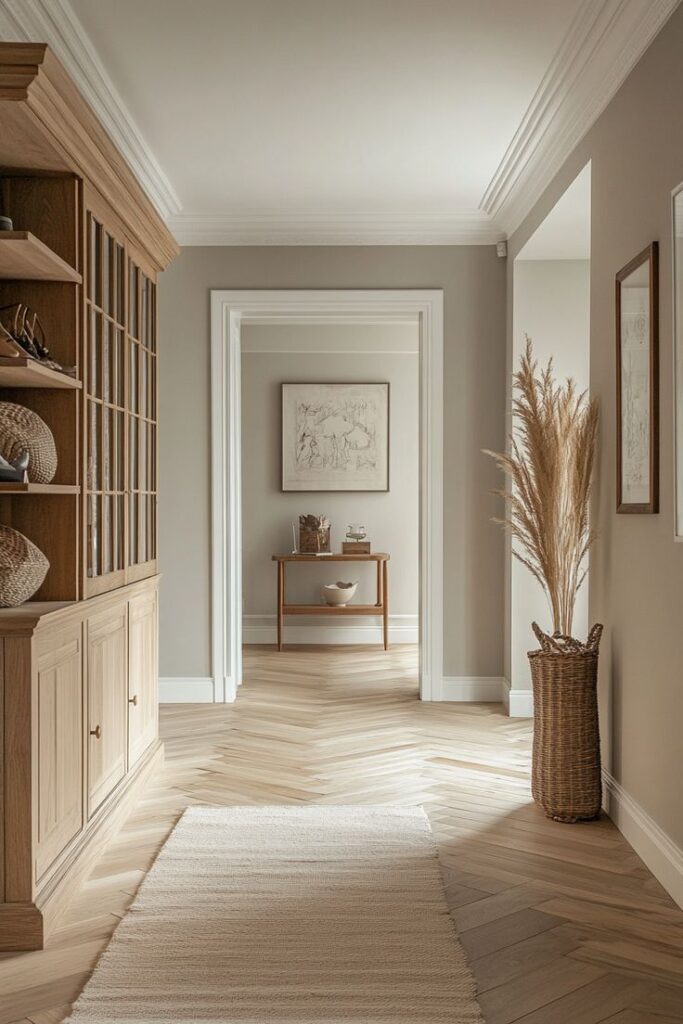
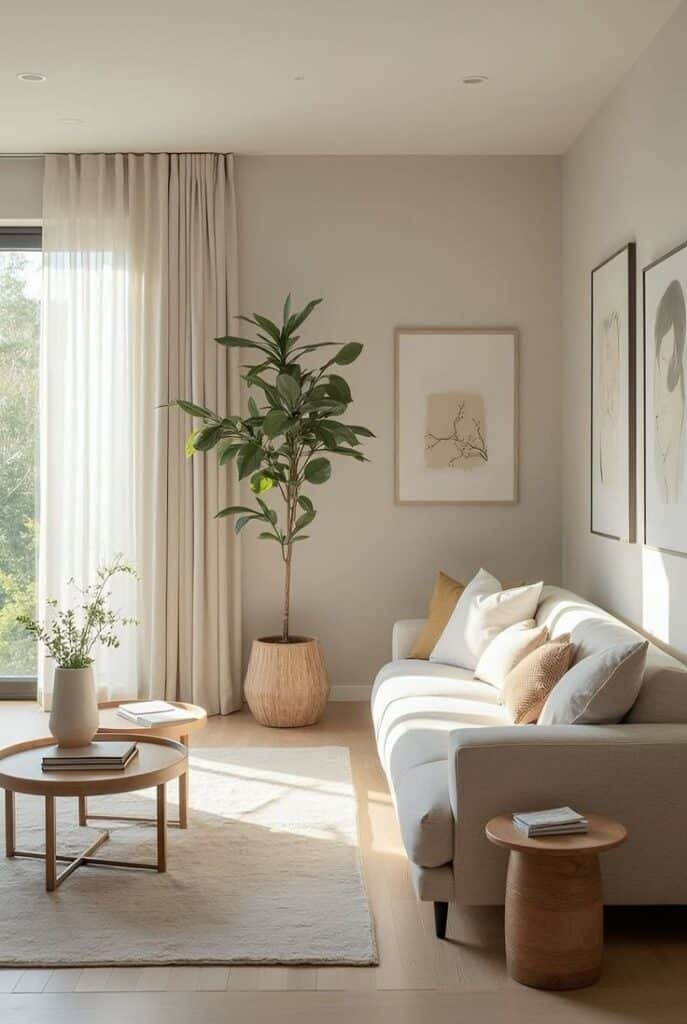
Emphasis on Lighting and Airy Spaces
Scandinavian design masterfully addresses the challenge of long, dark Nordic winters through strategic use of light and space. This approach creates environments that foster well-being and tranquility while maximizing the limited natural daylight available throughout the year.
Maximizing Natural Light
Scandinavian interiors prioritize large windows with minimal coverings to allow maximum daylight penetration. Position your furniture to avoid blocking windows, and consider glass doors for interior rooms to allow light to flow throughout the space.
Reflective surfaces play a crucial role in bouncing light deeper into rooms. Light-colored walls—typically white or soft neutrals—help amplify natural light rather than absorb it.
Consider skylights or light tubes in darker areas of your home, particularly in northern-facing rooms. These architectural elements can transform naturally dark spaces by introducing overhead daylight.
Many Scandinavian homes also incorporate glass partitions rather than solid walls to maintain light flow while still defining separate functional areas.
Lighting Fixtures and Floor Lamps
When natural light fades, thoughtfully selected lighting fixtures maintain the bright, airy atmosphere. Layer your lighting with a combination of ambient, task, and accent sources.
Pendant lights with simple, geometric designs often hang in dining areas and kitchens, providing focused illumination without visual heaviness. Materials like glass, light-colored wood, and white metal predominate.
Floor lamps are essential Scandinavian elements, offering both functional lighting and sculptural interest. Look for designs with slim profiles, adjustable components, and neutral finishes. The classic arc floor lamp extending over seating areas exemplifies this functional elegance.
Table lamps with simple ceramic or wooden bases paired with white or natural linen shades add warmth without visual clutter. Position these throughout your space for even light distribution.
Open and Spacious Layouts
Scandinavian design embraces open floor plans that eliminate unnecessary walls and partitions. This approach allows light to travel unobstructed throughout the home, creating a sense of spaciousness even in smaller dwellings.
Furniture selection and placement are critical to maintaining this airiness. Choose pieces with raised legs that allow light and sight lines to pass underneath. This creates a perception of more floor space and reduces visual weight.
Built-in storage solutions help minimize clutter while maximizing functional space. Wall-mounted shelving, under-stair storage, and multi-purpose furniture keep possessions organized while maintaining open sightlines.
Scale your furniture appropriately to your space—oversized pieces can quickly make a room feel cramped. The Scandinavian approach favors quality over quantity, with carefully selected items that serve clear purposes.
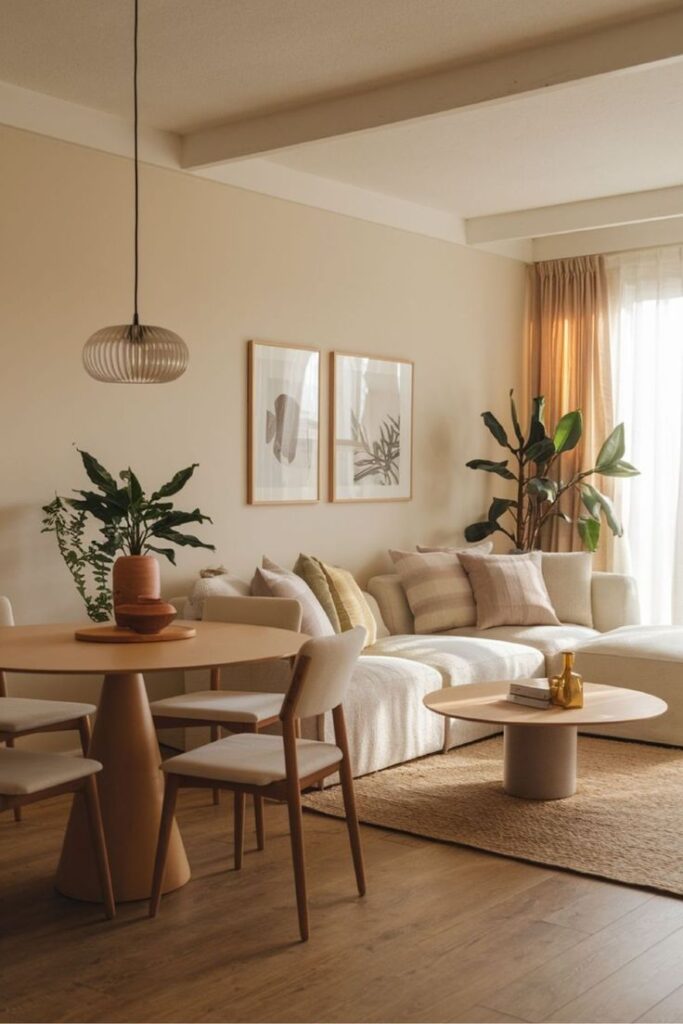
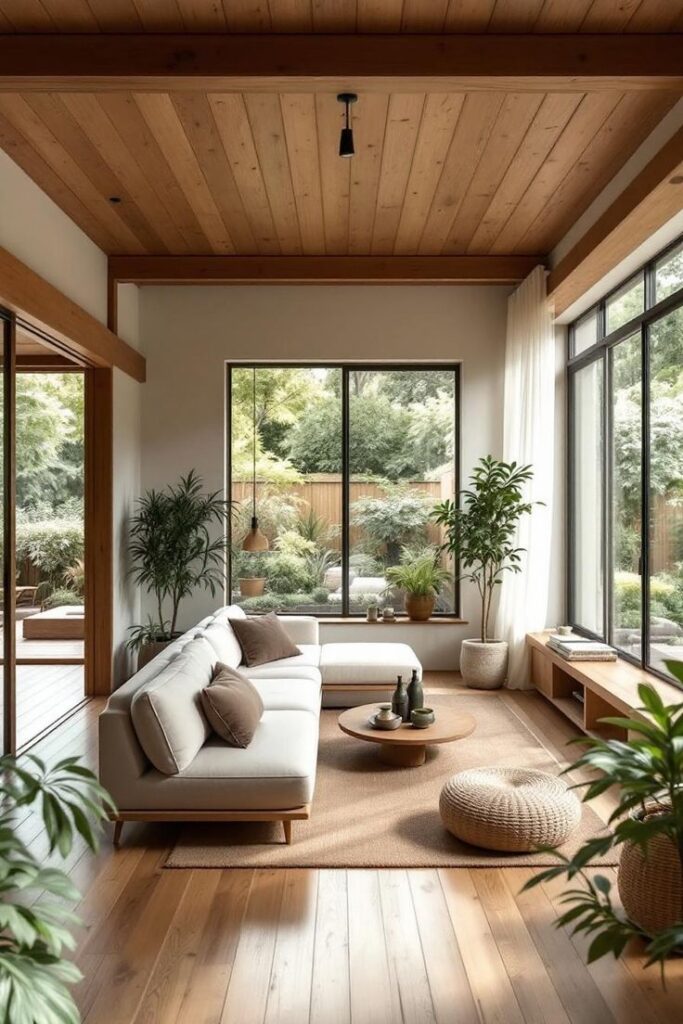
Integration of Greenery and Cozy Accents
Scandinavian design embraces natural elements to create spaces that feel both refreshing and intimate. The strategic placement of plants and thoughtful additions of comfort-focused details transform minimalist interiors into welcoming sanctuaries.
Incorporating Greenery
Plants play a crucial role in Scandinavian interiors, serving as living design elements that bring vitality to clean, neutral spaces. Potted succulents offer low-maintenance options perfect for tabletops and shelves. You can place larger leafy plants in corners to soften architectural lines and create visual interest.
Strategic positioning of greenery near windows maximizes their exposure to natural light while enhancing the connection to the outdoors. Consider hanging plants to utilize vertical space without cluttering surfaces. Common choices include spider plants, peace lilies, and rubber plants that thrive in indoor conditions.
For smaller spaces, wall-mounted planters or terrariums provide greenery without sacrificing valuable floor area. The contrast between lush plants and the typical white walls of Scandinavian interiors creates a refreshing visual balance that energizes the room.
Creating Hygge and Warmth
Hygge, the Danish concept of coziness and contentment, forms the emotional foundation of Scandinavian interiors. You can cultivate this feeling through thoughtful layers of texture and comfort. Drape chunky knit throws over simple furniture and arrange soft cushions in natural fabrics like wool, cotton, and linen.
Candlelight is essential for creating hygge—place simple candles in groups on tables or windowsills to create gentle illumination. Choose warm-toned lighting fixtures that cast a soft glow rather than harsh overhead lights.
Natural materials enhance the cozy atmosphere. Incorporate wooden elements through furniture, picture frames, or decorative objects. Ceramic vases or bowls in muted colors make perfect homes for fresh flowers or greenery.
Consider creating a designated relaxation nook with a comfortable chair, small side table, and good reading light. This dedicated space embodies the Scandinavian principle that home should be a sanctuary for wellbeing and comfort.
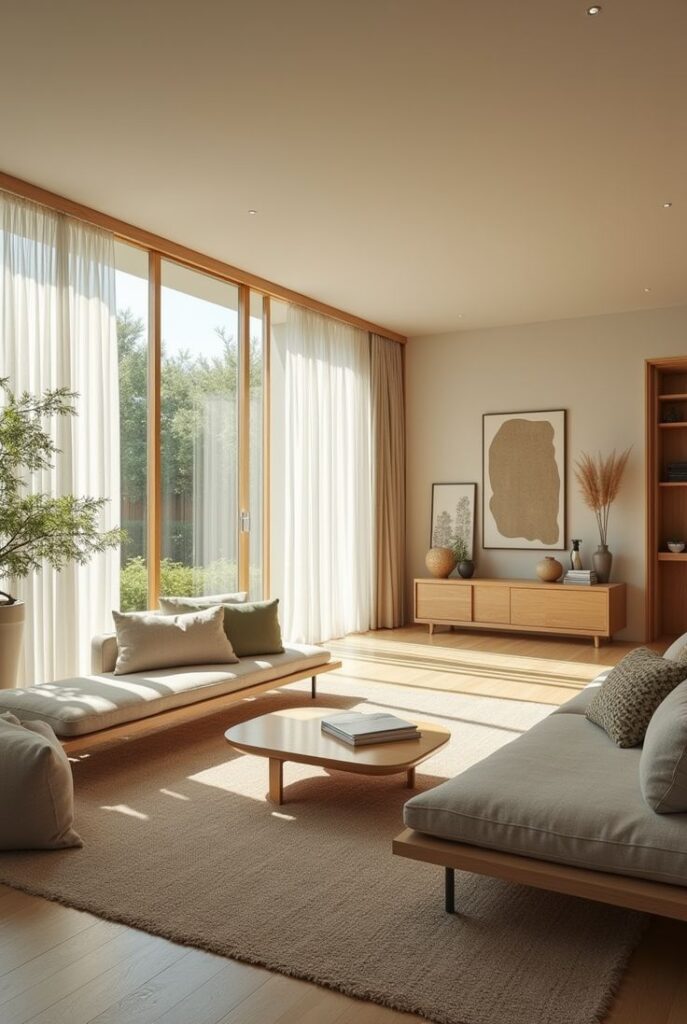
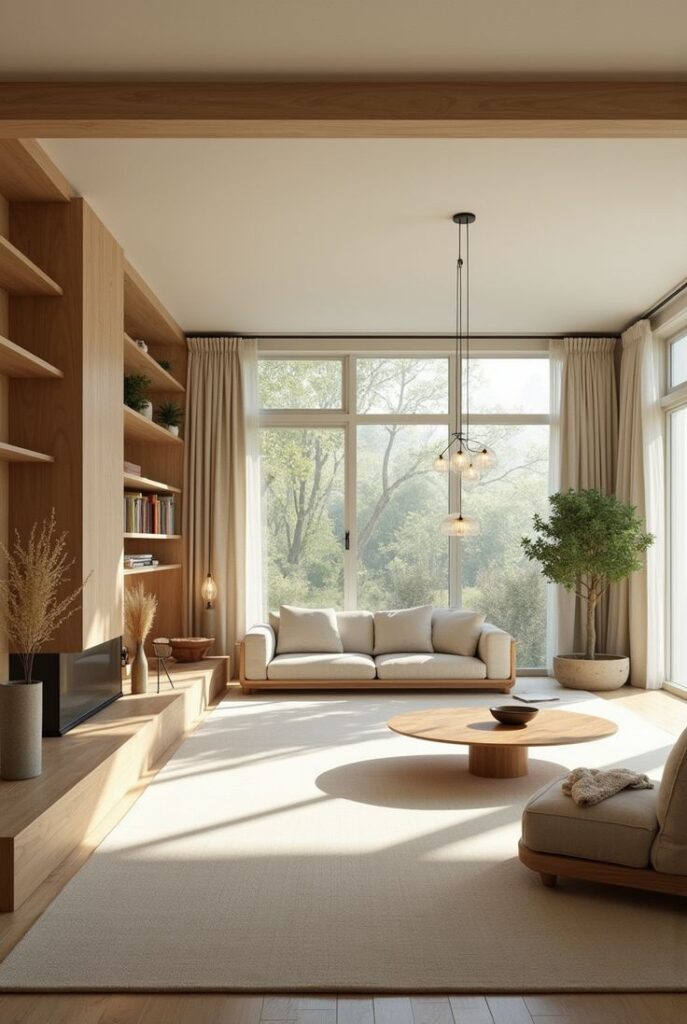
Historical and Contemporary Influences
Scandinavian design draws from a rich tapestry of historical influences while continuously evolving to address contemporary needs. The movement’s remarkable journey spans from traditional Nordic craftsmanship to modern architectural innovations that have left an indelible mark on global design standards.
Nordic Countries’ Cultural Roots
The foundation of Scandinavian design lies in the cultural heritage of Denmark, Sweden, Norway, Finland, and Iceland. These Nordic countries share a common design language rooted in their harsh climate and limited resources, which fostered practicality and efficiency.
The Arts and Crafts movement of the late 19th century significantly influenced early Scandinavian design, emphasizing craftsmanship over mass production. This philosophy merged with the modernist movement in the 1930s, creating a distinctive style that valued both function and beauty.
Natural materials like wood, wool, and leather feature prominently in Scandinavian design, reflecting the region’s deep connection to nature. You can see this in the light woods and organic forms that characterize authentic Scandinavian pieces.
The social democratic values of Nordic societies also shaped design principles, with an emphasis on creating beautiful, functional objects accessible to all social classes, not just the wealthy.
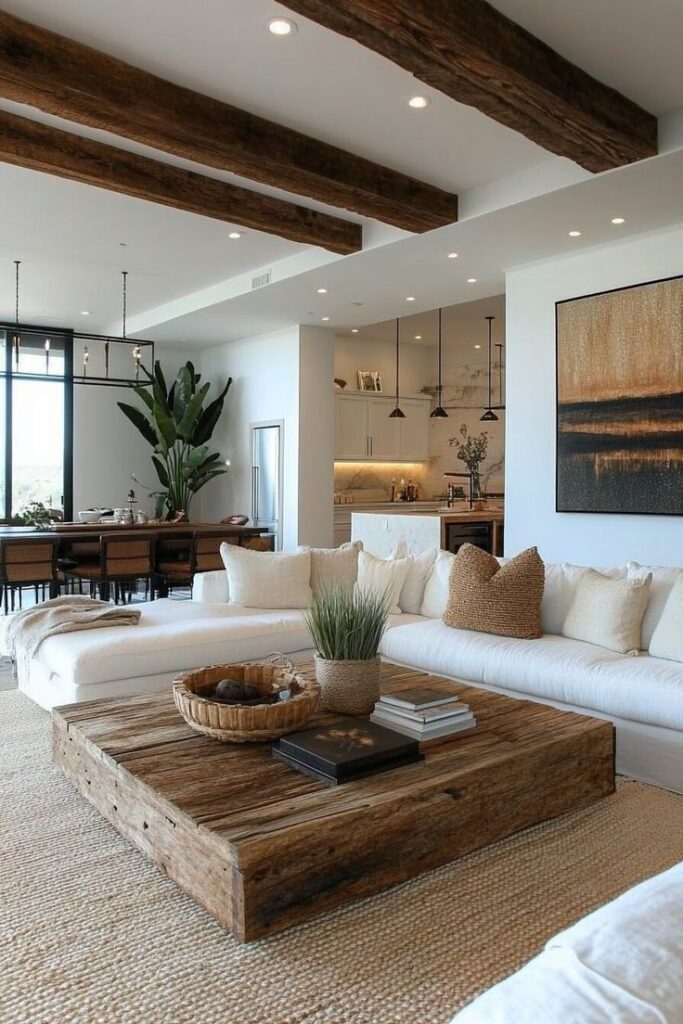
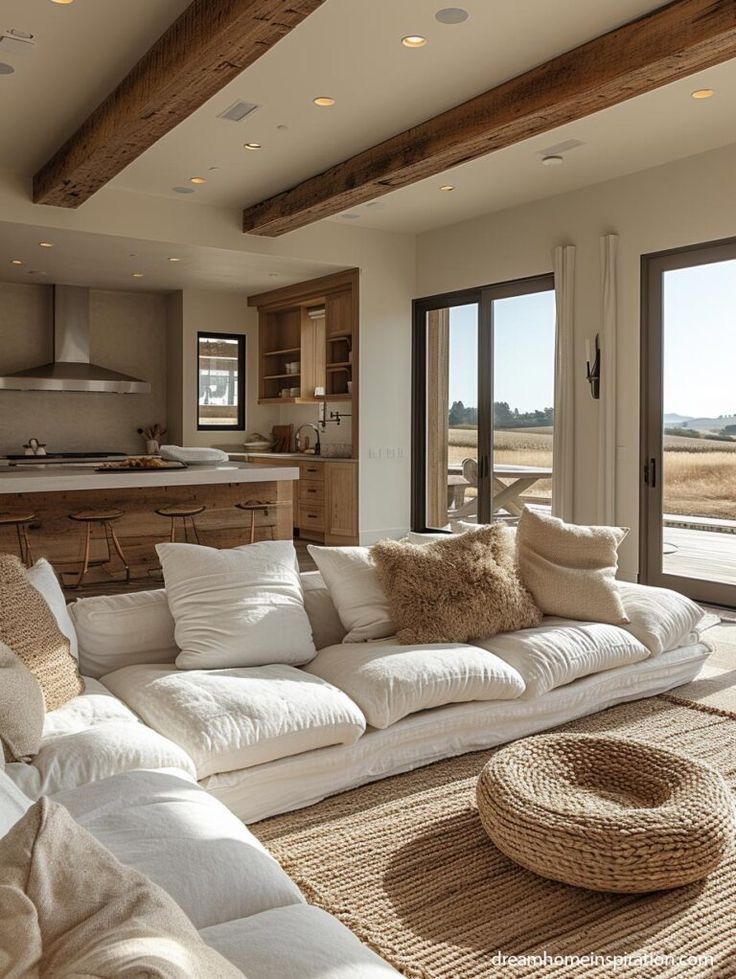
Key Designers: Hans Wegner and Bjarke Ingels
Hans Wegner, the renowned Danish designer, revolutionized furniture design in the mid-20th century. His iconic “Wishbone Chair” (1949) exemplifies Scandinavian principles through its elegant simplicity and perfect functionality.
Wegner’s work celebrates craftsmanship while embracing modern production methods. His designs feature organic shapes, natural materials, and meticulous attention to ergonomics—ensuring furniture that’s beautiful and comfortable.
Key Wegner designs:
- The Peacock Chair (1947)
- The Round Chair (1950) – nicknamed “The Chair”
- The Shell Chair (1963)
In contemporary design, Bjarke Ingels represents Scandinavian architecture’s innovative spirit. His firm BIG (Bjarke Ingels Group) creates bold structures that combine playfulness with sustainability.
Ingels’ “hedonistic sustainability” approach demonstrates how environmentally responsible design can enhance rather than limit quality of life. His CopenHill waste-to-energy plant in Copenhagen doubles as a ski slope, exemplifying this philosophy.
Evolution of Scandinavian Architecture
Traditional Scandinavian architecture emphasized harmony with nature, using local materials and designing for natural light—crucial in regions with long, dark winters. Simple farmhouses and wooden churches showcase this historical approach.
The mid-20th century saw architects like Alvar Aalto and Arne Jacobsen pioneer modernist buildings that maintained connection to nature while embracing new technologies and materials. Their work balanced international modernism with distinctly Nordic sensibilities.
Contemporary Scandinavian architecture has evolved to address 21st-century challenges. You’ll find a strong focus on sustainability, with innovations in passive houses, energy efficiency, and carbon-neutral buildings leading global trends.
Urban planning in Nordic cities showcases human-centered design principles. Copenhagen and Stockholm feature bicycle-friendly infrastructure, accessible public spaces, and buildings that prioritize community interaction.
Timber construction has experienced a renaissance, with cross-laminated timber enabling taller wooden structures that reduce carbon footprints while honoring traditional building materials.
- 93shares
- Facebook0
- Pinterest93
- Twitter0
- Reddit0

